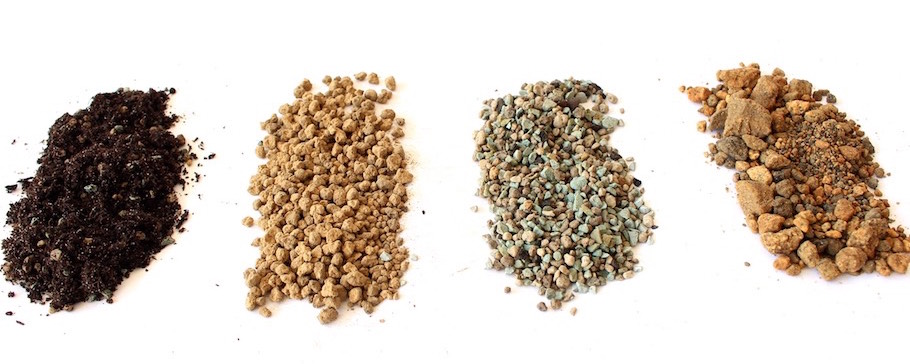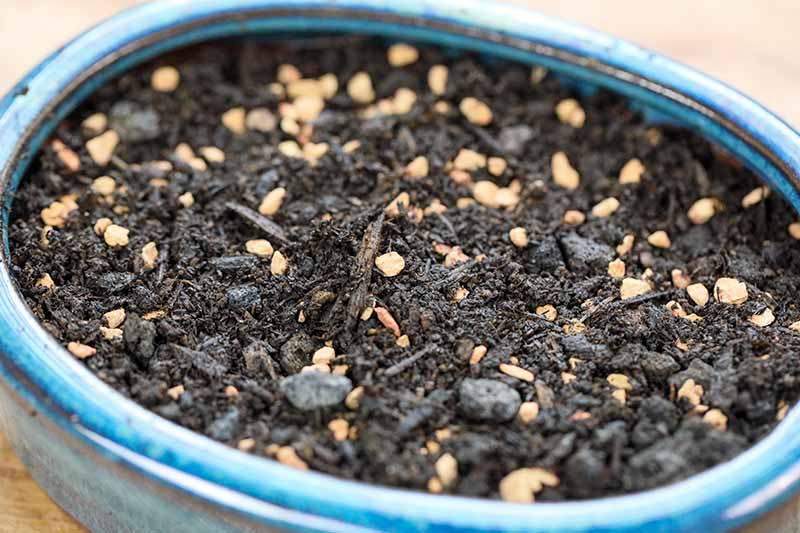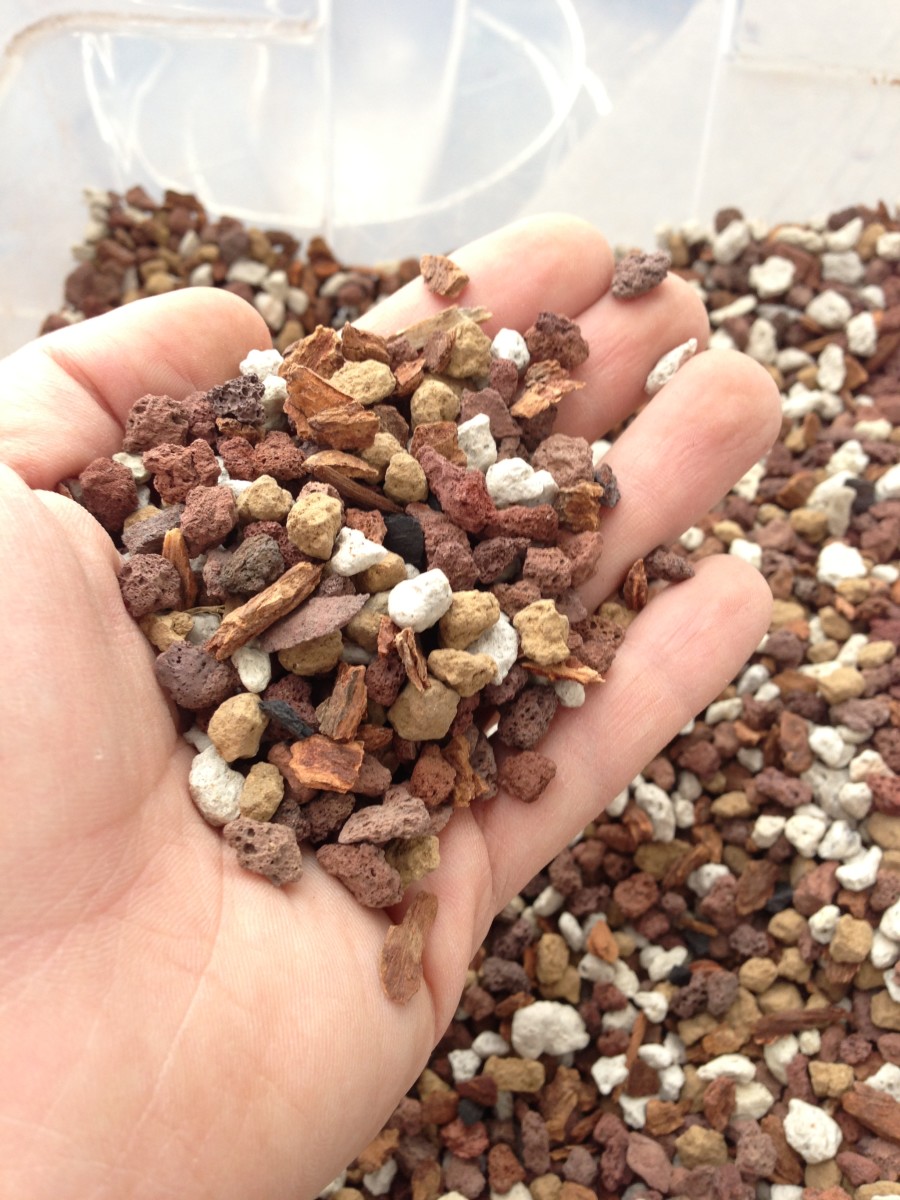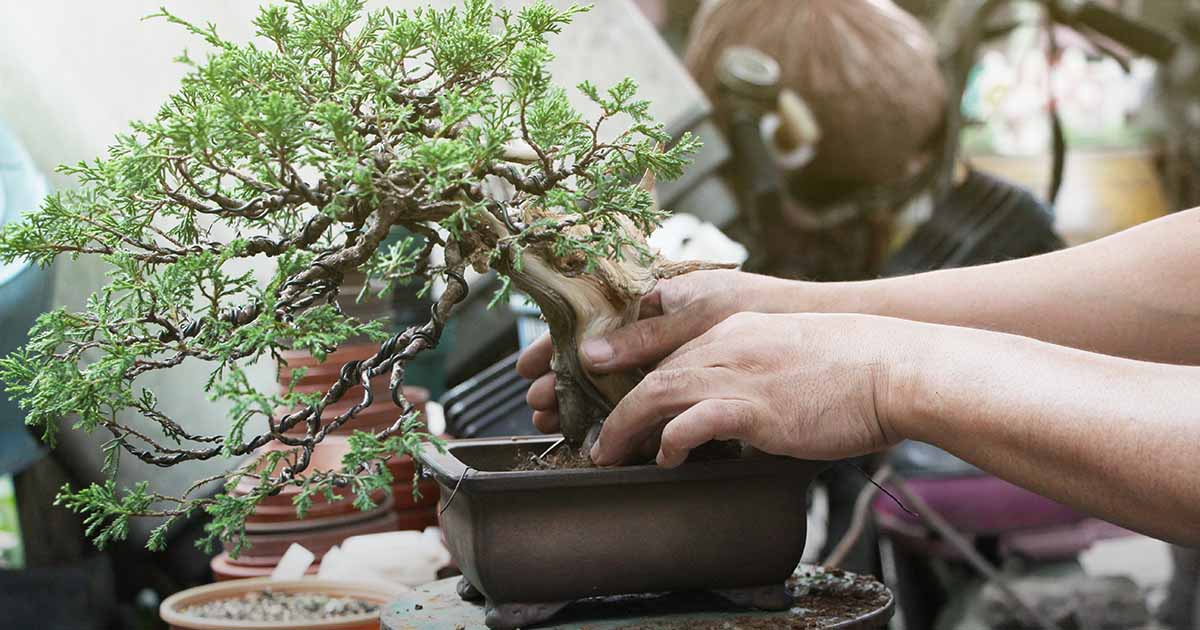In the following paragraphs, we are going to examine the differing types of soil and substrates Utilized in bonsai cultivation, including organic and inorganic options.
We are going to also explore proposed soil mixtures for numerous bonsai species, for instance deciduous, coniferous, and indoor types. From akadama and pumice to moss and river sand, we will dive to the interesting world of bonsai soil and make it easier to realize why It truly is a significant part of cultivating these exquisite trees.

Bonsai soil
What is bonsai soil?
Bonsai soil is a specialized type of soil that is specifically formulated for growing and maintaining bonsai trees. Unlike regular garden soil, bonsai soil is well-draining and provides the necessary nutrients and moisture balance for the tree's root system. The composition of bonsai soil is carefully designed to meet the unique needs of bonsai trees, ensuring their health and longevity.
The importance of bonsai soil
The choice of soil plays a crucial role in the success of your bonsai tree. The right soil provides optimal drainage, allowing excess water to flow freely and preventing root rot. It also promotes a healthy and well-developed root system, which is essential for the overall health and growth of the tree. Bonsai soil retains moisture while allowing air to reach the roots, striking the perfect balance for the tree's needs. Choosing the right bonsai soil is essential for maintaining a healthy and thriving bonsai tree.
Bonsai substrates
What are bonsai substrates?
Bonsai substrates refer to the different materials that can be used to create the ideal soil composition for bonsai trees. These substrates are carefully chosen to meet the specific needs of different species of bonsai trees and to ensure proper water drainage and nutrient availability.
Different types of bonsai substrates
There are various types of bonsai substrates available, each with its own unique characteristics and benefits. Some common bonsai substrates include:
- Organic materials: These include ingredients such as bark, peat moss, and coconut coir. Organic substrates help retain moisture and provide essential nutrients to the bonsai tree.
- Inorganic components: These incorporate components like pumice, lava rock, and akadama. Inorganic substrates give great drainage, making sure that excess h2o won't accumulate across the roots on the bonsai tree.
- Soil amendments: These are generally substances which can be added to the soil mixture to enhance its Attributes. Samples of soil amendments include things like perlite, vermiculite, and sand. They improve the soil's aeration, h2o-Keeping ability, and nutrient availability.
By comprehending the differing types of bonsai substrates as well as their Qualities, you may pick the most fitted one particular for the bonsai tree's demands.
Organic and natural or Inorganic Soils
Natural and organic soils for bonsai
Organic soils for bonsai are made up of pure supplies including bark, peat moss, coconut coir, and compost. These components offer a wealthy source of nutrients for that bonsai tree and boost balanced root development. Organic soils also have great water retention Qualities, guaranteeing that the tree receives sufficient dampness involving watering sessions. On the other hand, it is vital to note that natural and organic soils could stop working after a while and develop into compacted, bringing about poor drainage and possible root concerns.
Inorganic soils for bonsai
Inorganic soils for bonsai include supplies like pumice, lava rock, akadama, and soil amendments like perlite or vermiculite. These materials have exceptional drainage Houses, stopping waterlogged soil and selling aeration across the roots. Inorganic soils are most popular by lots of bonsai fanatics because of their longevity and talent to provide a steady environment for your bonsai tree's root process. Even so, They might involve additional frequent watering and additional fertilization, as they don't keep as much moisture or nutrients as natural and organic soils.
Advantages and disadvantages of applying organic and natural and inorganic soils for bonsai
Picking out involving natural and inorganic soils for the bonsai tree depends upon several variables, such as the distinct species of tree, your local climate, and private preferences. Here are the pros and cons of each and every:
Natural and organic soils:
- Execs: Offer nutrients, excellent h2o retention, promote nutritious root growth.
- Disadvantages: May perhaps stop working eventually, probable for weak drainage if not adequately taken care of.
Inorganic soils:
- Professionals: Exceptional drainage, extensive-Long lasting, stable environment for roots.
- Cons: Fewer water retention, might demand far more Repeated watering and fertilization.
By considering the benefits and drawbacks of equally organic and natural and inorganic soils, you can also make an educated decision determined by the specific requires of your bonsai tree.
Soil components
Important elements of bonsai soil
Bonsai soil is typically composed of 3 most important parts: grit, natural and organic issue, and clay. These components get the job done collectively to build The best soil structure with the bonsai tree's root technique.
- Grit: Grit, including sand or perlite, provides drainage and aeration in the soil. It helps stop waterlogging and permits air to get to the roots.
- Natural matter: Natural and organic make any difference, for example compost or bark, supplies nutrients into the bonsai tree. In addition, it allows keep dampness and Increase the soil's Total structure.
- Clay: Clay particles present some water retention attributes and enable bind the soil with each other. Nonetheless, excessive clay may lead to poor drainage and compaction.
Purpose of each and every soil component
Every soil component plays a vital part in making a effectively-balanced and nutritious atmosphere with the bonsai tree's roots.
- Grit: Grit provides the required drainage and aeration within the soil. It prevents the roots from sitting down in stagnant drinking water, cutting down the potential risk of root rot and selling overall root wellness.
- Natural subject: Organic matter offers essential nutrients into the bonsai tree. It aids in dampness retention and contributes to the general framework of the soil.
- Clay: Clay particles enable bind the soil with each other and provide some h2o retention potential. Nonetheless, it's important to balance the level of clay to avoid issues like bad drainage and compaction.
By understanding the roles of each and every soil part, you can Aoki Bonsai soil produce a well balanced bonsai soil combine that fulfills the specific desires of your tree.

Recommended Bonsai soil mixtures
Common bonsai soil mixtures
There are several common bonsai soil mixtures that have been proven effective for various types of bonsai trees. These mixtures typically consist of a combination of inorganic substrates, organic matter, and soil amendments.
Some of the commonly used bonsai soil mixtures include:
- Akadama, pumice, and lava rock: This mixture is popular among bonsai enthusiasts for its excellent drainage and water retention properties.
- Akadama, lava rock, and organic issue: This combination combines the advantages of inorganic substrates with the nutrient-abundant properties of organic make any difference.
- Pumice, perlite, and bark: This mixture presents very good drainage and aeration while retaining some dampness and supplying nutrients.
These are generally just a few samples of bonsai soil mixtures, and the ideal combination will rely upon the specific needs within your bonsai tree and your local climate.
Components to look at when deciding upon a bonsai soil mixture
When selecting a bonsai soil mixture, it is important to look at the next components:
- Species of bonsai tree: Different species have distinctive humidity and nutrient needs. Investigate the specific desires of your respective tree to pick a soil mixture that fulfills its specifications.
- Local climate: The weather you live in can have an impact on the moisture retention Homes from the soil. Look at the common humidity and temperature in your neighborhood When picking a soil mixture.
- Watering behaviors: Your personal watering routines and routine need to align Using the soil mixture you select. Some mixtures demand extra Regular watering, while some retain moisture for for a longer time intervals.
- Spending budget: Some soil factors may be dearer than Other folks. Take into account your finances when choosing a soil combination.
By getting these aspects into consideration, it is possible to go with a bonsai soil combination that provides the most effective expanding situations on your tree.
Deciduous Bonsai soil
Very best soil composition for deciduous bonsai
Deciduous bonsai trees, like maple or birch, have unique soil requirements to help their growth and overall health. The very best soil composition for deciduous bonsai normally includes a combination of organic and natural make any difference, inorganic substrates, and soil amendments.
A advised soil composition for deciduous bonsai may well consist of:
- Akadama: Gives very good h2o retention even though making it possible for for drainage. In addition it releases nutrients little by little as time passes.
- Pumice: Encourages aeration and drainage from the soil, preventing waterlogging.
- Bark or peat moss: Provides natural and organic matter into the soil, offering nutrients and humidity retention.
This soil composition makes certain that the roots of deciduous bonsai trees receive the correct stability of humidity, nutrients, and oxygen for optimal progress.

Coniferous and Pine soil
Ideal soil mixture for coniferous and pine bonsai
Coniferous and pine bonsai trees have specific soil requirements due to their water retention needs and preference for acidic soil. An ideal soil mixture for coniferous and pine bonsai should provide good drainage while retaining moisture and maintaining the desired pH level.
A recommended soil mixture for coniferous and pine bonsai may include:
- Akadama: Provides excellent water retention while allowing for sufficient drainage. It releases nutrients slowly over time.
- Pumice: Promotes aeration and drainage in the soil, preventing waterlogged roots.
- Peat moss: Adds organic subject and acidity to your soil, building a super pH amount for coniferous and pine trees.
This soil combination makes sure that the roots of coniferous and pine bonsai trees acquire the right harmony of dampness, nutrients, and acidity for their distinct demands.
Akadama
Precisely what is akadama?
Akadama can be a type of clay soil that may be broadly Utilized in bonsai cultivation. It is actually noted for its exceptional drinking water retention properties, which ensure a gentle provide of moisture into the bonsai tree's roots. Akadama can also be check here prized for its capability to release nutrients slowly but surely after some time, offering a consistent supply of nourishment to the tree.
Advantages of making use of akadama in bonsai soil
Employing akadama in bonsai soil presents numerous Advantages:
- H2o retention: Akadama has Excellent h2o retention properties, allowing it to carry moisture without the need of getting to be waterlogged. This makes certain that the bonsai tree's roots get a continual source of h2o, endorsing healthier progress.
- Nutrient release: Akadama slowly but surely releases nutrients to the soil after a while, delivering a consistent supply of nourishment for that bonsai tree. This decreases the need for Repeated fertilization and aids retain a well balanced nutrient profile.
- Aeration: Inspite of its water retention abilities, akadama also supplies enough aeration to the bonsai tree's roots. It lets air to get to the root process, blocking problems which include root rot due to lack of oxygen.
By incorporating akadama into the bonsai soil, you may develop an optimum expanding natural environment to your tree, making certain its health and fitness and vitality.

Lava rock
How lava rock benefits bonsai soil
Lava rock is a popular component in bonsai soil mixtures due to its excellent drainage and aeration properties. It is typically used in conjunction with other substrates to create the ideal soil composition for bonsai trees.
The benefits of lava rock in bonsai soil include:
- Drainage: Lava rock provides excellent drainage, preventing waterlogging and ensuring that excess water flows freely through the soil. This helps prevent root rot and provides a healthy environment for the roots to thrive.
- Aeration: The porous nature of lava rock permits air to circulate within the soil, providing oxygen on the bonsai tree's root system. Correct aeration is very important for balanced root progress and General tree progress.
- Longevity: Lava rock can be a long lasting product that does not stop working very easily. This makes certain that the soil composition continues to be secure after a while, minimizing the need for frequent soil replacements.
Lava rock is on the market in different measurements and shapes, permitting for customization dependant on the particular desires of your bonsai tree and soil necessities.
Differing kinds of lava rock
You can find different types of lava rock which might be used in bonsai soil mixtures, including:
- Black lava rock: Black lava rock is a frequently made use of content in bonsai soil mixtures. It provides outstanding drainage Attributes and adds an aesthetic component to the general presentation on the bonsai tree.
- Pink lava rock: Red lava rock is yet another well-known preference in bonsai soil mixtures. It offers equivalent drainage and aeration Positive aspects as black lava rock but has a definite reddish colour that provides visual interest into the container.
Both black and crimson lava rocks are extensively readily available and will be effortlessly incorporated into your bonsai soil mixture.
Potting
Necessary tips for prosperous bonsai potting
Potting is often a significant method in bonsai cultivation, since it immediately impacts the health and fitness and enhancement on the tree's roots. Here are a few important methods for prosperous bonsai potting:
- Pick the ideal pot sizing: Find a bonsai pot that enables for root progress whilst however giving a cosy healthy. Stay clear of pots that are also massive, since they may result in too much soil moisture and bad root advancement.
- Use bonsai wire: Secure the tree from the pot making use of bonsai wire to guarantee security. This prevents the tree from shifting or becoming uprooted during watering or sturdy winds.
- Trim and unfold the roots: Ahead of potting the bonsai tree, meticulously trim and unfold out the roots. This encourages outward advancement and helps prevent root tangling or root-certain concerns.
- Include mesh screens: Location mesh screens over the drainage holes at the bottom on the pot to avoid soil erosion and make certain right drainage.
- Use new bonsai soil: When potting, often use refreshing bonsai soil to supply the mandatory nutrients and ideal expanding problems to the roots.
By subsequent these crucial suggestions, you can guarantee An effective potting approach and promote the overall health and expansion of your respective bonsai tree.
The role of bonsai pots in soil moisture control
Bonsai pots Enjoy a vital role in soil dampness Management, immediately impacting the health and development from the tree. Bonsai pots are typically shallow and possess drainage holes, making it possible for extra h2o to escape and protecting against the soil from starting to be waterlogged.
The look of bonsai pots encourages evaporation and air circulation, which will help control soil dampness ranges. The shallow depth and large opening from the pot expose much more area spot from the soil to your air, aiding in moisture evaporation. This stops the roots from sitting down in excessively wet soil, lessening the potential risk of root rot and other drinking water-similar concerns.
On top of that, the drainage holes in bonsai pots permit any surplus h2o to escape, avoiding waterlogged soil and promoting aeration across the roots. Good aeration is important for the well being and growth of the foundation method, guaranteeing the bonsai tree gets the mandatory oxygen for expansion.
By utilizing bonsai pots suitable for efficient dampness Management, you could produce a good natural environment for your personal bonsai tree's roots and market its All round well being and vitality.
In conclusion, selecting the ideal bonsai soil is important with the success and wellness of the bonsai tree. Comprehending the different sorts of bonsai substrates, the purpose of natural and organic and inorganic soils, The important thing elements of bonsai soil, and the various advised soil mixtures can assist you give the best increasing ailments in your bonsai tree. Irrespective of whether there is a deciduous or coniferous bonsai, incorporating elements like akadama and lava rock can enrich the soil's drainage and nutrient availability. Additionally, paying attention to potting techniques and using bonsai pots designed for humidity Command will even further assist the thriving growth of your bonsai tree. With good knowledge and implementation of bonsai soil techniques, it is possible to enjoy the beauty and artistry of bonsai cultivation For some time to come back.
